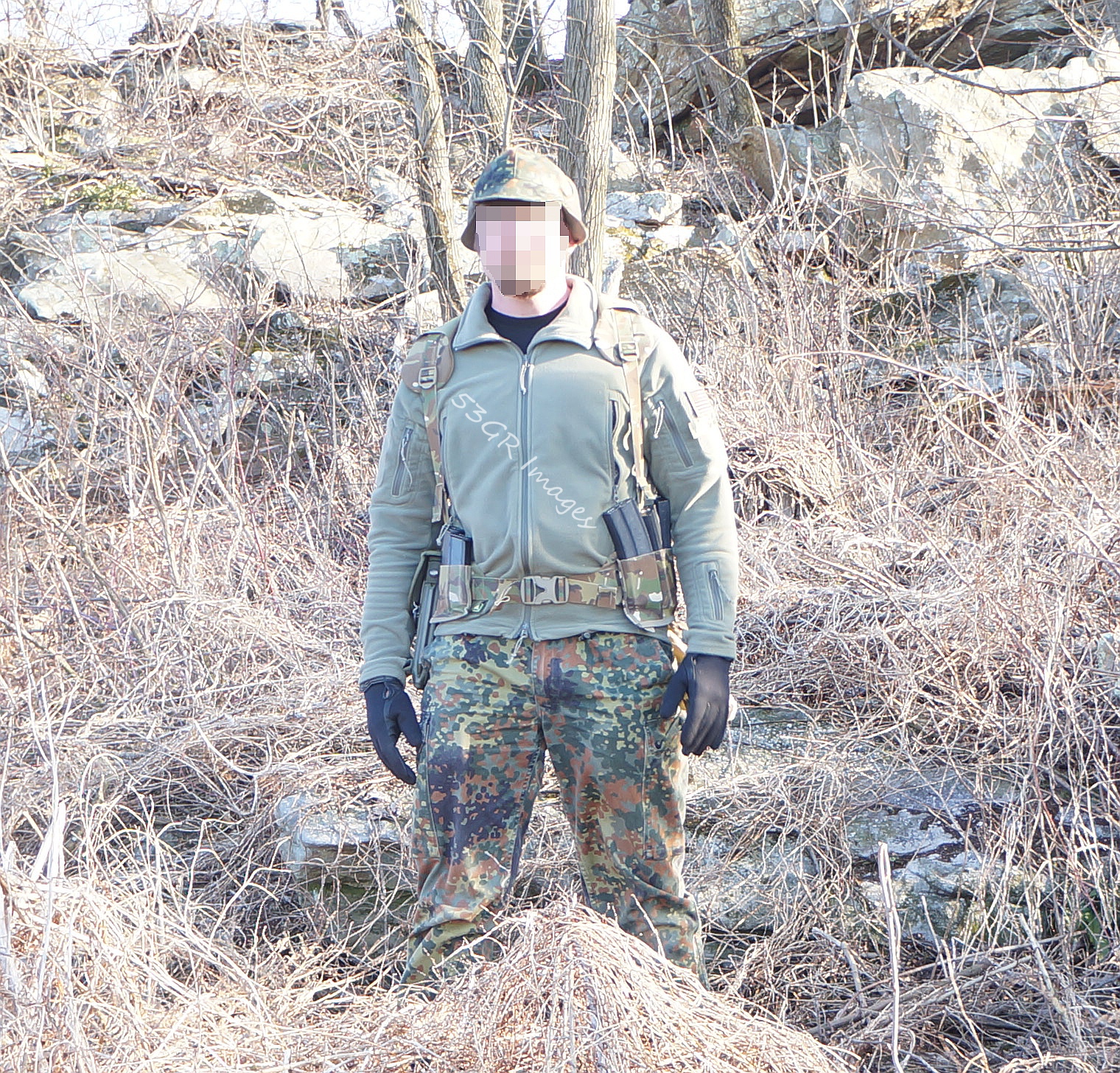As part of a continuing series, we’re going to be looking at Load-Carrying Equipment (LCE) and different philosophies and methods of use. Modern American forces tend to use their armor carriers, such as the IBA, IOTV and Scalable Plate Carriers as platforms to mount their gear. We’ll look at the pros and cons of this when compared to a more traditional belt-centric system.
While the US Marines do have their issued Propper Sub Belts, these are really more of a secondary platform. The belt is flimsy and not designed to handle a massive amount of gear. In the limited interaction I had with the Marines in Iraq, I never saw one wearing a sub belt. The pictures I’ve seen of Marines with this belt all show them with a minimal amount of gear on it, usually only a few pistol mags, a pistol holster (if pistol is issued) and a dump pouch. Pretty much everything else goes on the plate carrier.
The Brits have a very different philosophy. They’ve continued to use the PLCE (Personal Load Carrying Equipment), which is essentially their version of the ALICE belt and suspenders. Used throughout the late 20th century and on into the 21st, they continue to upgrade and utilize it long after we discarded our ALICE belts. Their webbing has evolved over the last few decades, while still remaining true to the idea that you carry your basics on your belt, and extras on your torso.
While many British units have mounted gear exclusively to their torsos (and this has evolved throughout the Global War on Terror), the belt kit remains an essential part of their loadout.
Personal Experience
My philosophy of load carriage has developed quite a bit since I started out with everything on my armor. This made sense, as I’d just come back from a contractor job in Iraq. While mounting all your pouches with ammunition and utilities on your torso is fine for mounted work or sitting around the base, it’s way too heavy for mobile operations. One hike with my brother on the Appalachian Trail was all it took to convince me that a full Spartan II armor carrier with large steel plates was not practical at all.

The logical next step was to go to a chest rig, which works great when inside a vehicle. The problem with a large chest rig, such as the Flecktarn Chest Rig I briefly used, have similar problems. Such a large rig encourages you to overload the thing. I had 10 AR magazines, my SIG P226 and some ancillaries. Again, a hike up to the top of a rocky ridge (this time in the dark of night), convinced me I had a bit more to learn. All that weight pressing in on my ribcage was unpleasant. While it was great to have all those pouches, they encouraged me to overload myself.
The next step was a Blue Force Gear Ten-Speed M4 Chest rig, which is on sale right now. It has integrated single-mag pockets made from elastic. This whole setup is very light, and allows you to have four magazines on your chest, pistol mags to one side, and a utility pouch on the other. Though the rig was light, it didn’t allow me to carry much, and all the weight was on my ribcage.

Blue Force Gear sent me a BELTminus to play with, and I greatly enjoyed it. I could fit quite a lot of gear onto that super-light little rig. Unfortunately, it had a tendency to get twisted, literally. It’s so lightweight and thin that it tends to flop around and get tangled up in itself when stored in the trunk of your car. Still, it held together well throughout use, including pushing through bramble bushes. After a few months, some of the edges began to fray and at parts, the laminate became unglued, leading to peeling. The buckle is very light and would sometimes let the belt get loose as I wore it.
I decided that I needed something a bit more stout. I ended up going with a HSGI SureGrip belt. You can read about my impressions here. Also in that article, I noted that if you run an ALICE belt, you can use a belt pad to increase its comfort. The British have taken that concept a step forward with their hippo belt pad, which is a larger pad, providing protection and comfort for the hips, especially from heavy amounts of ammunition on the side.

I liked the idea of having a belt that hung down a bit further, protecting the hips from ammo pouches. Most double or triple mag pouches will hang down well below the two rows of PALS/MOLLE (not counting the space in between) that are present on almost all commercially available American battle belts. A British Hippo belt covered in PALS webbing would fit the bill.
A more substantial belt is useful when carrying the weight of a fighting load. A quick search through the Internet can provide many examples of citizen patriots with only a pistol, dump pouch and a scant few magazines on their SureGrip belts. My aim is to have a belt that carries all of the essentials.
We will look at an interesting platform from British Tactical in an upcoming article on load carriage. I look forward to evaluating both the British Tactical Hippo belt and the broader concept.
-By Allen Cosby
Latest posts by 53gr (see all)
- H&H Medical: H Bandage and Thin H Bandage – January 2, 2020
- S&W M&P M2.0 Series – January 9, 2017
- SIG Sauer P938 – October 19, 2016



Leave a Reply